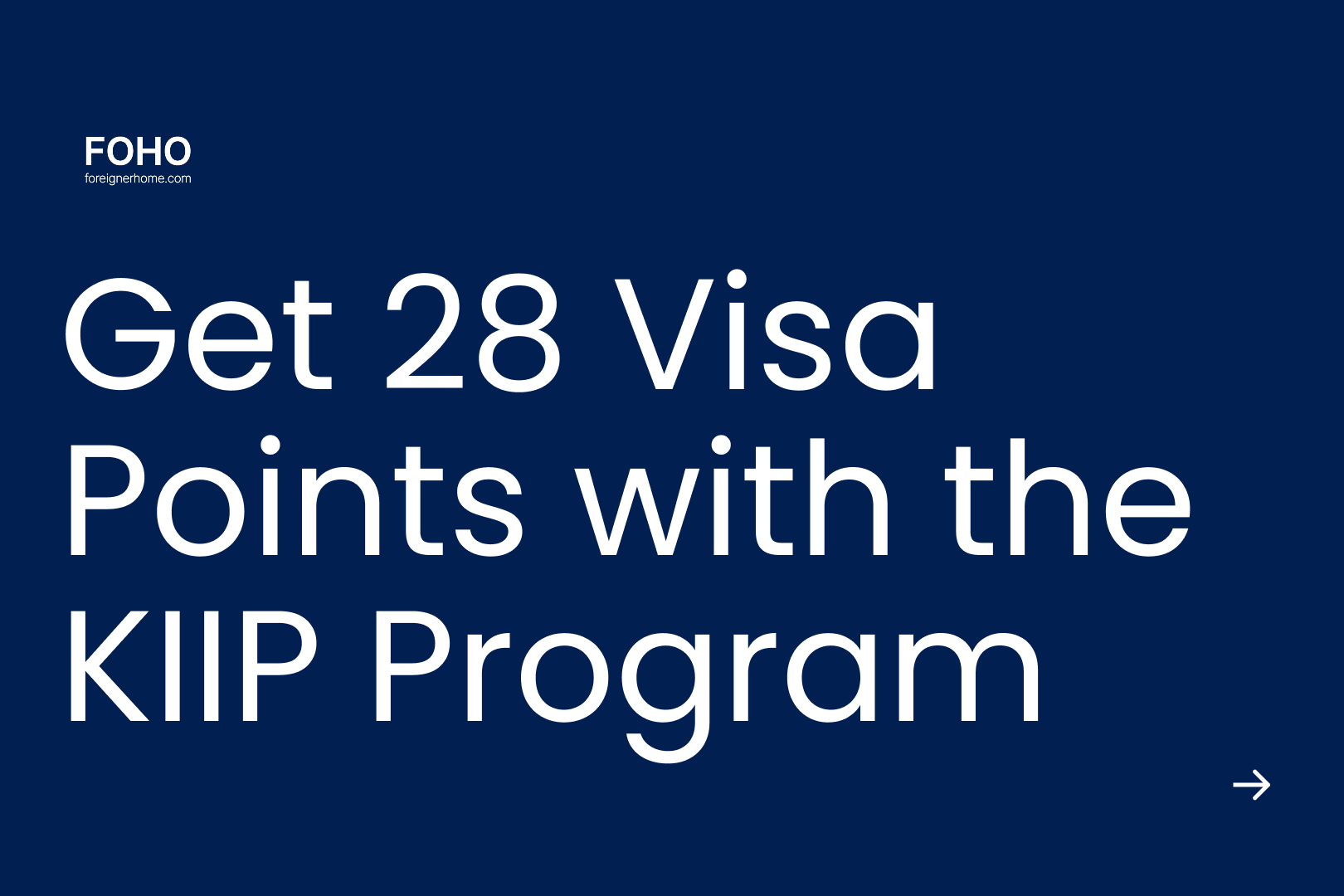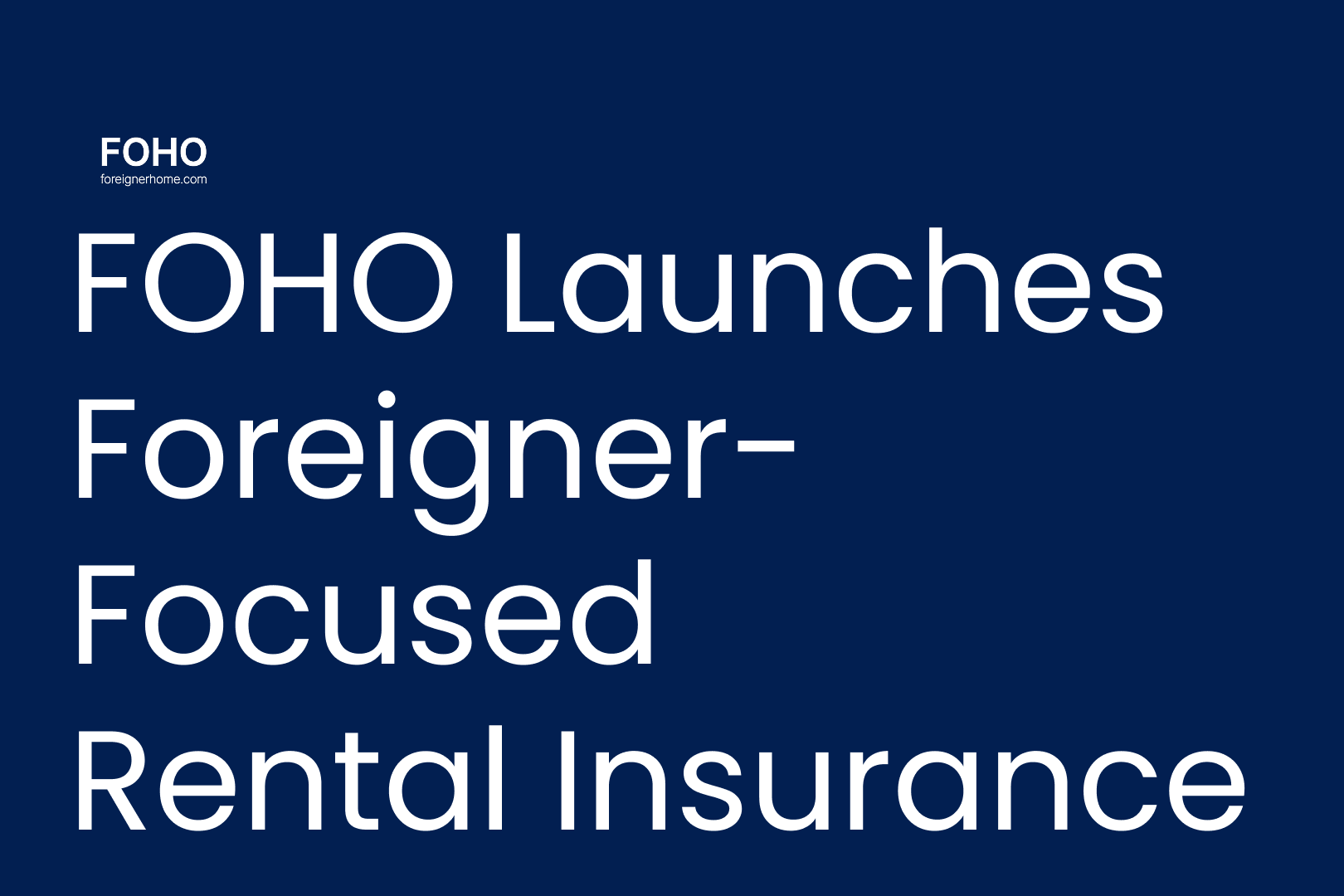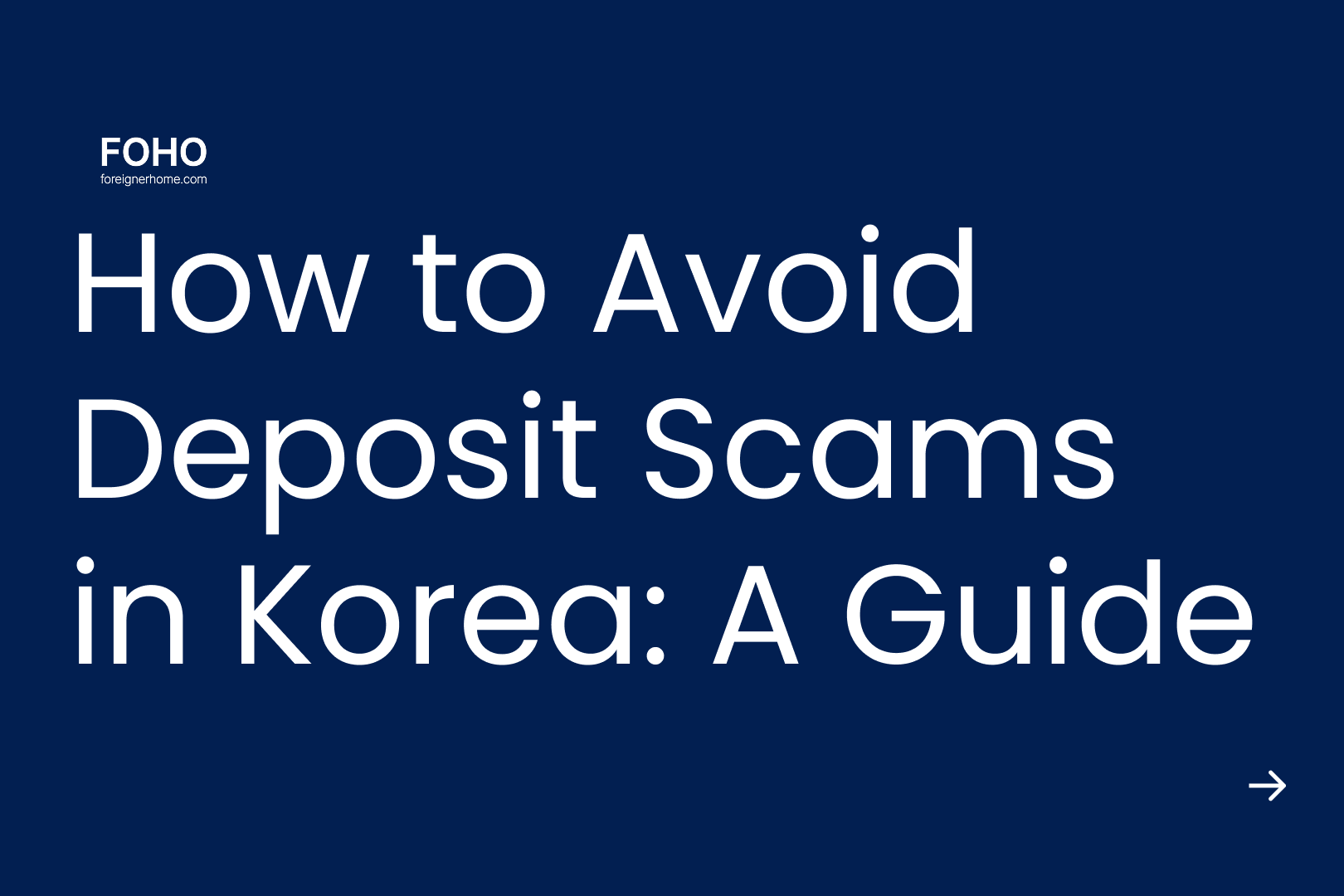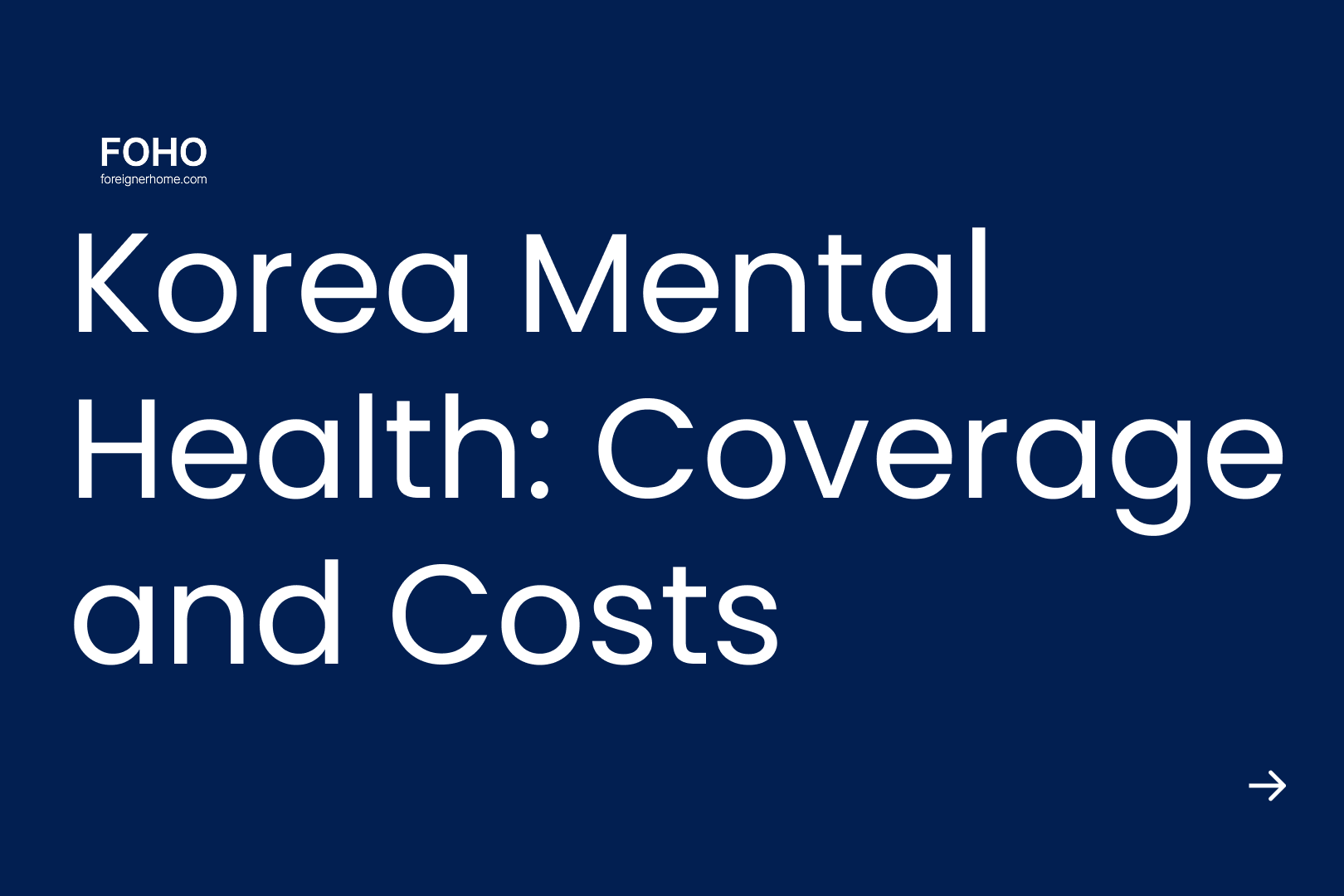FOHO Blog – Global Housing & Living Guide for Foreigners
KIIP Korea: How to Apply & Get Visa Points in 2026
Get a complete guide to the KIIP in Korea for 2026. Learn how to apply, pass the level test, and earn up to 28 points for your F-2-7 visa. For all foreign residents.

Table of contents
- 01The 2026 KIIP Guide: Your Complete Roadmap to the Korea Immigration and Integration Program (사회통합프로그램)
- 021. What is KIIP? (사회통합프로그램)
- 032. The Core Benefits: Why KIIP is Essential
- 043. Who is Eligible for KIIP?
- 054. The KIIP Application: A Step-by-Step Guide
- 065. The KIIP Levels: A Deep Dive (Level 0–5)
- 076. Conquering the Exams: Mid-term and Comprehensive
- 087. Insider Tips for Success
- 09Glossary of Terms
- 10Conclusion
- 11Find Your Home in Korea with Confidence
- 12Source
The 2026 KIIP Guide: Your Complete Roadmap to the Korea Immigration and Integration Program (사회통합프로그램)
1. What is KIIP? (사회통합프로그램)
2. The Core Benefits: Why KIIP is Essential
- Major Points for Visas: It provides a substantial number of points toward the F-2-7 points-based residency visa.
- Exemptions for Permanent Residency: Completing Level 5 can exempt you from the Korean proficiency test required for the F-5 permanent resident visa.
- Exemptions for Citizenship: It can also exempt you from the written test and interview for Korean citizenship (naturalization).
KIIP Completion Status | Points Awarded |
Completed Level 2 | 10 Points |
Completed Level 3 | 15 Points |
Completed Level 4 | 20 Points |
Completed Level 5 (Main Program) | 25 Points |
Completed Level 5 + Comprehensive Test Score of 60+ | 28 Points |
3. Who is Eligible for KIIP?
- Student visas (D-2, D-4)
- Work visas (e.g., E-2, E-7)
- Spouse visas (F-6)
- Residency visas (F-2)
- Overseas Korean visas (F-4)
4. The KIIP Application: A Step-by-Step Guide
- Go to www.socinet.go.kr.
- Complete the membership registration (회원가입). You will need your Alien Registration Number.
- Ensure all personal information matches your official ARC records exactly.
- How it works: The test consists of a multiple-choice written exam and a short oral interview.
- How to apply: Application dates are announced on the Socinet website. Log in to the site, go to the "Level Test Application" menu, and select a test date and location.
- Important: Test slots are limited and fill up extremely quickly. Applications often open at midnight, and you must be ready to register at that exact time.
5. The KIIP Levels: A Deep Dive (Level 0–5)
Level | Course Name (Korean) | Total Hours | Main Focus & Content | Approx. TOPIK Equivalent |
Level 0 | 입문 과정 (Introductory) | 15 | Basic Hangeul, greetings, simple sentence structure. | N/A |
Level 1 | 초급 1 (Beginner 1) | 100 | Essential vocabulary, basic grammar, daily life topics. | Level 1 |
Level 2 | 초급 2 (Beginner 2) | 100 | Public facilities, hobbies, making requests. | Level 2 |
Level 3 | 중급 1 (Intermediate 1) | 100 | Korean culture, social life, more complex grammar. | Level 3 |
Level 4 | 중급 2 (Intermediate 2) | 100 | Korean society, laws, employment, and economy. | Level 4 |
Level 5 | 심화 과정 (Advanced) | 70 | Deep understanding of Korean society and politics. | Level 5+ |
6. Conquering the Exams: Mid-term and Comprehensive
- Mid-term Evaluation (중간평가): At the end of Levels 1, 2, 3, and 4, you must pass a mid-term test to proceed. It usually consists of written and listening questions. You must score 60 points or higher to pass.
- Comprehensive Test (종합평가): After completing the Level 5 course, you must take the final comprehensive test. This is the most important exam. It includes a multiple-choice written test and an oral interview. A passing score on this test officially certifies your completion of the entire program.
7. Insider Tips for Success
- Maintain 80% Attendance: You must attend at least 80% of your classes to be eligible to take the final exam for each level. Keep track of your hours carefully.
- Choose Your Location Wisely: Some operating centers have better reviews than others. A location closer to your home or work will make it easier to maintain attendance.
- Supplement Your Speaking Practice: The classes can be fast-paced and may not offer enough time for speaking. Use language exchange apps or find a study partner to practice conversation skills.
- Prepare for Registration Day: Set an alarm for the class registration opening time. Have your preferred class choices ready, as popular slots (like Saturday classes) are gone in seconds.
Glossary of Terms
- KIIP: Korea Immigration and Integration Program. The official government program for foreign residents.
- Socinet (사회통합정보망): The official website used to manage all KIIP applications, tests, and classes.
- Sajeon Pyeongga (사전평가): The initial Level Test or placement exam.
- Unyeong Gigwan (운영기관): An "Operating Institution," such as a university or community center, that hosts KIIP classes.
- Jonghap Pyeongga (종합평가): The final Comprehensive Test required to complete the entire program.
Conclusion
Find Your Home in Korea with Confidence
- Lowest Service Fees: Spend less on the rental process and more on your new life.
- Clear Communication: Our team supports you in communicating with landlords—from the first inquiry to after you move in.
- Nationwide Listings: Access affordable homes in Seoul and across the country.
- Dedicated Support: Never feel lost or alone in your housing search again.
Source
Settle in faster with FOHO
Browse more verified listings and message landlords in minutes. Lock in your lease with FOHO's secure payments.
Get Foreigner-Friendly Housing Tips
Get the latest news delivered to your inbox.

Nov 4, 2025
FOHO Launches Foreigner-Focused Rental Insurance
FOHO’s deposit insurance protects foreign tenants in Korea from landlord defaults. Stay safe with clear coverage and fast claims.

Oct 31, 2025
How to Convert E-9 Visa to E-7-4 in Korea
A guide for Vietnamese & Chinese E-9 workers in Korea. Learn the E-7-4 visa points system, F-2 requirements, and compare GME vs. Sentbe for remittance.

Oct 30, 2025
How to Avoid Deposit Scams in Korea: A Guide
Avoid deposit scams in Korea with our step-by-step guide. Learn to check property debt, understand the 'Deung-gibu,' and secure your deposit.

Oct 29, 2025
Korea Mental Health: NHIS Coverage and Costs
Get help with mental health in Korea. This guide for foreigners explains how to use NHIS, find low-cost options, and get medication prescriptions locally.
Subscribe to the FOHO newsletter
Actionable housing insights in your inbox.